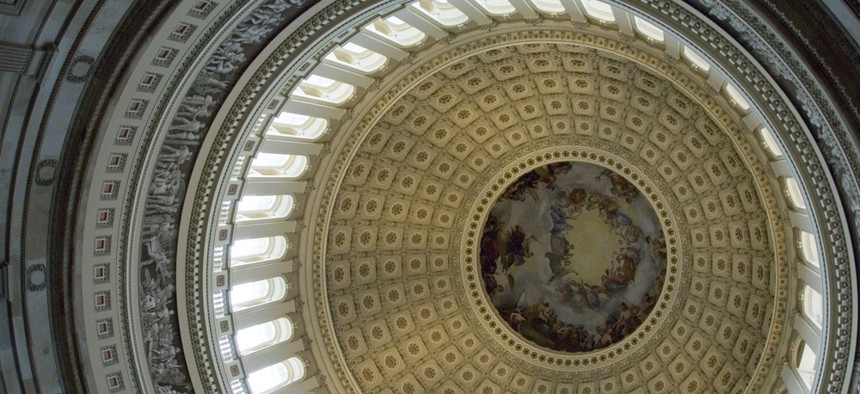
Condor 36/Shutterstock.com
Congress Just Found a Way to Make Deficits Disappear
This bit of accounting trickery could have dire consequences for the budget.
One of the first tasks accomplished by the new US congress was tweaking the rules used by Congressional accountants to hide the borrowing caused by tax cuts.
The shift in methods directly reflects the preferences of the new Republican majority in Congress. The new rules require the use of “dynamic scoring” models, which rely on dubious economic theory to suggest that tax cuts pay, at least partially, for themselves. This minimizes the very real conflict between an agenda of tax cuts and one of debt reduction. It’s a bit of political jujitsu—with consequences that could be disastrous for the US budget.
The theory is that lower tax rates will lead to more work, earning, and investment, spurring economic growth that otherwise would be unrealized, absent changes in tax law. An estimate of a tax cut’s costs created by a “static” model would miss that growth, so economists have attempted to develop “dynamic” models that account for behavioral changes that come after tax cuts.
The problem is, the models they’ve built don’t really reflect how people behave, and tend to significantly overstate the effects of the tax cuts. Sometimes that’s because changes in tax law that lead to lower rates while closing loopholes may not lower effective tax rates for everyone, and the hoped-for incentives don’t materialize. But it’s also because the assumptions used by key analysts studying the tax proposals—notably those from the Congressional Budget Office—don’t actually reflect data gathered by economists in the field.
The assumptions in question concern how workers react to changes in their wages. While economists who study actual workers with changing wages find that it has little effect on their behavior, dynamic scoring models tend to assume a large one. A report last January from the Congressional Research Service concluded that “these models still rest on unproven, and probably unreasonable assumptions about the elasticity of substitution between consumption amounts that are ten or twenty years apart.”
For a more concrete example, consider the 2003 tax cuts enacted by president George W. Bush. These cuts dramatically lowered taxes on income and investment gains for the wealthiest Americans. “Lower taxes and greater investment will help this economy expand,” Bush said in his State of the Union speech that year. “More jobs mean more taxpayers and higher revenues to our government.”
At the time, the CBO warned (pdf) that they also would lead to years of deficits. But the Heritage foundation, a conservative think tank, used a dynamic model to predict that budget surpluses would quickly return despite the tax cuts. Here’s how that went:

Now, this is a little unfair to Heritage and CBO alike, since lots of other things happened to the US budget between 2003 and 2013, notably some very expensive wars and a severe recession. But this idea—that so much can happen to the economy beyond tax cuts—is also what makes dynamic models so uncertain. Because the models have to account for the size of the economy, they need to make assumptions about all kinds of future policies, which can result in things like the eight different estimates of congressman David Camp’s tax plan last year. He chose the two rosiest, naturally. (As for the Bush tax cuts, even initially, deficits remained larger than what Heritage’s dynamic model indicated; and independent studies have found that the cuts did not lead to an increase in economic growth .)
This year, when large tax cuts are proposed, don’t count on the CBO to be a stern source of fiscal rectitude. It will be required to put forth an analysis using dynamic scoring that will likely undercount the true cost of cutting taxes—muddling attempts by the public and politicians alike to understand the implications of their choices.
( Image via Condor 36 / Shutterstock.com )







